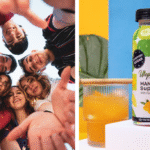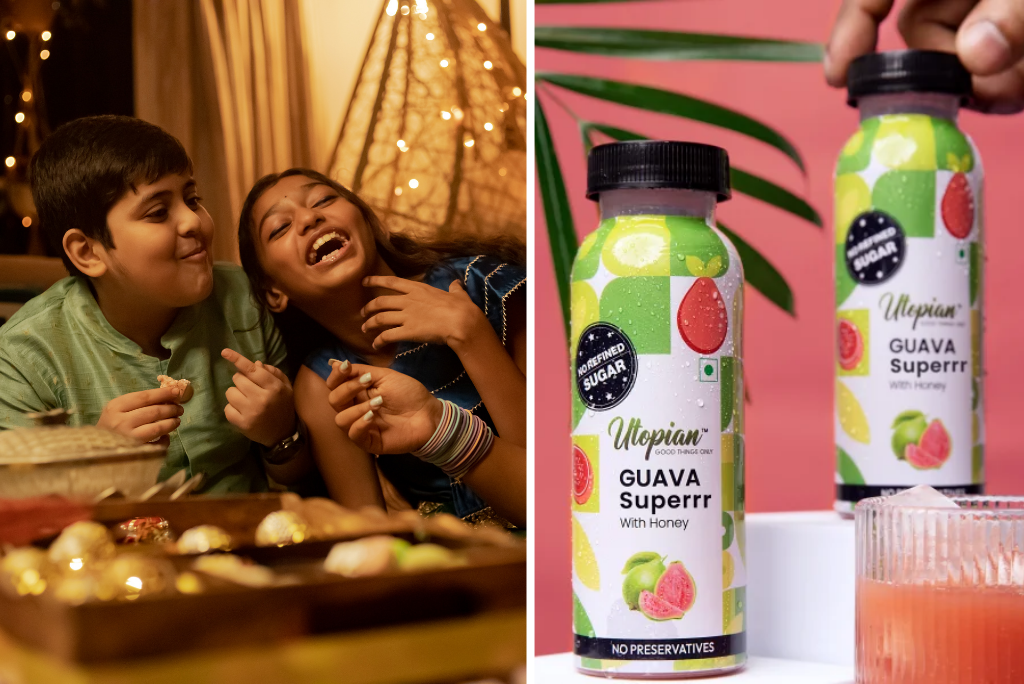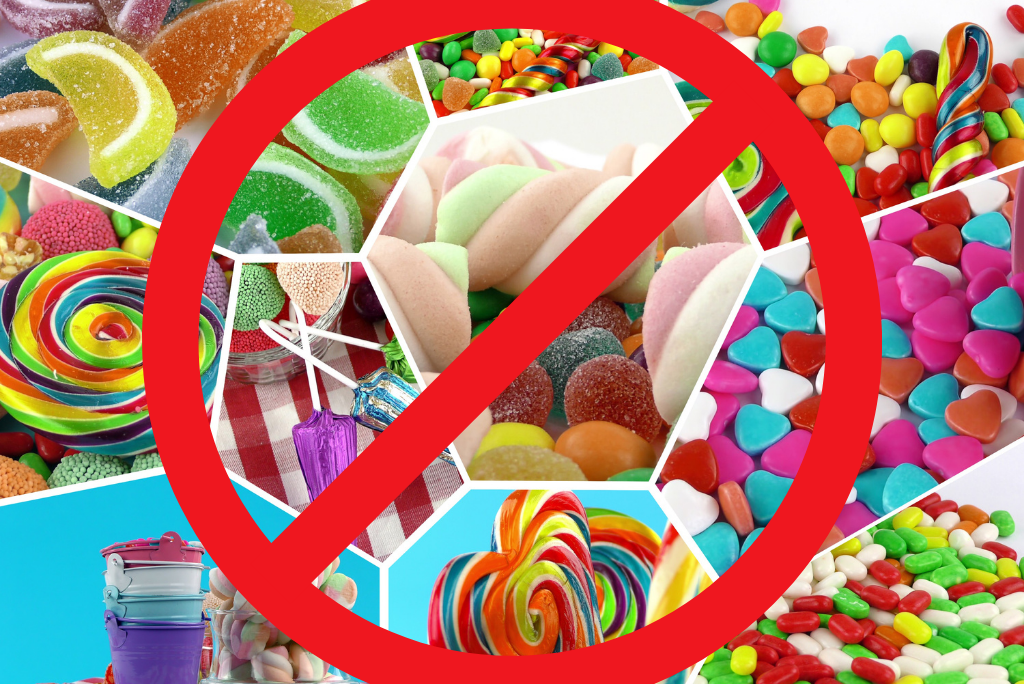
How Label-Reading Parents Across India Are Transforming Children’s Nutrition, One Juice Box at a Time
How Label-Reading Parents Across India Are Transforming Children’s Nutrition, One Juice Box at a Time
Walk into any supermarket in Mumbai, Delhi, Bangalore, or any metro city across India, and you’ll notice something remarkable happening in the beverage aisle. Parents are no longer making quick grab-and-go decisions. They’re flipping cartons, scrutinizing labels, and asking tough questions. This isn’t just caution—it’s a revolution. Indian parents are becoming some of the most informed consumers in the world, and their focus is clear: finding genuine no sugar juices India has to offer, protecting their children from hidden dangers lurking in seemingly innocent drink boxes.
The Wake-Up Call: Why Indian Parents Started Reading Labels
For years, Indian families trusted brands implicitly. If a juice box showed mangoes or oranges on the packaging and claimed “made with real fruit,” it seemed like a healthy choice. Busy parents juggling careers, household responsibilities, and children’s activities needed convenient solutions. Packaged juices fit perfectly into lunch boxes and after-school snacks.
But something shifted. News reports about childhood obesity, diabetes cases in teenagers, and behavioral issues linked to diet started appearing regularly. Pediatricians began warning about excessive sugar consumption. WhatsApp parent groups buzzed with shocking revelations about what’s actually inside popular juice brands.
Indian parents discovered that many products marketed as “fruit juice” contained barely 10-15% actual fruit, with the rest being water, sugar, preservatives, and artificial flavors. Some popular juice boxes contained six to eight teaspoons of sugar per serving—more than the entire daily recommended limit for children. Terms like “fruit drink,” “fruit beverage,” and “juice cocktail” were decoded as marketing speak for sugar water with fruit flavoring.
This awakening led to a fundamental question: If these products aren’t truly healthy, what should we give our children?
Understanding the Indian Beverage Market: The Hidden Sugar Crisis
India’s packaged beverage market has exploded over the past two decades. From traditional nimbu pani and coconut water, we’ve moved to countless packaged options lining supermarket shelves. But this convenience came with a hidden cost—excessive sugar that’s contributing to alarming health trends.
Consider these concerning facts about the Indian context:
Childhood obesity in India has tripled in the last decade. Metropolitan cities like Chennai, Delhi, and Mumbai report that nearly 30% of children are overweight or obese. Diet, particularly sugar-sweetened beverages, plays a significant role.
Type 2 diabetes, once an adult disease, is increasingly diagnosed in Indian teenagers. Doctors attribute this partly to high sugar consumption from packaged foods and drinks that weren’t part of traditional Indian diets.
Behavioral issues in children are rising. Many pediatricians notice connections between hyperactivity, attention problems, and diets heavy in artificial additives and sugar—common in conventional juice products.
Indian parents, traditionally focused on education and future security, are now recognizing that health is the foundation for everything else. They’re asking: What’s the point of securing admission to the best schools if our children’s health is compromised by daily dietary choices?
What Smart Indian Parents Look For: Decoding Labels
Modern Indian parents have become expert label detectives. Here’s what they’ve learned to scrutinize:
1. The Ingredient List
The golden rule: shorter is better. The ideal juice should list only the fruit itself—”oranges” or “mosambi” or “mixed fruits.” Every additional ingredient raises questions.
Indian parents have become particularly wary of ingredient lists that begin with “water” and “sugar” or “glucose syrup.” If sugar appears in the first three ingredients, it means the product is primarily sugar water, regardless of the fruit imagery on packaging.
They’ve also learned to recognize sugar’s many disguises common in the Indian market: glucose, fructose, sucrose, corn syrup, fruit juice concentrates, and inverted sugar syrup. Manufacturers often use multiple types to keep any single sugar from appearing first on the ingredient list.
2. Sugar Content Per Serving
Parents now religiously check the nutrition facts panel. They compare sugar content between brands and understand that a single 200ml serving shouldn’t exceed 10-12 grams of naturally occurring fruit sugars. Products with 25-30 grams of sugar per serving are recognized as health hazards, not healthy choices.
This awareness has driven the demand for no sugar juices India brands are now racing to provide. Parents understand that “no added sugar” isn’t the same as “no sugar”—the former might still contain concentrated fruit sugars or artificial sweeteners. Truly healthy options minimize even natural sugars through careful formulation.
3. Preservatives and Additives
Indian parents have educated themselves about common preservatives like Sodium Benzoate (E211) and Potassium Sorbate. While regulatory agencies deem them safe, research links these to hyperactivity in sensitive children—a concern for parents of kids with ADHD or behavioral challenges.
Artificial colors like Sunset Yellow and Tartrazine, still permitted in India despite bans or warnings in some countries, are now red flags. Parents recognize these serve no nutritional purpose and carry potential health risks.
4. The Search for Authenticity
Perhaps most importantly, Indian parents are seeking authenticity. They want products that deliver on their promises—real fruit, minimal processing, transparent sourcing. This desire has created enormous demand for lemon juice without sugar India consumers can trust, along with other genuinely healthy alternatives.
The Rise of No Sugar Juices India Parents Trust
The growing awareness has sparked a revolution in India’s beverage industry. Smart companies recognized that informed parents represent a powerful market segment willing to pay premium prices for products that genuinely serve their children’s health.
No sugar juices India now offers range from cold-pressed fruit and vegetable blends to innovative smoothies featuring superfoods, probiotics, and functional ingredients. These products emphasize:
- Real fruit and vegetable content with no dilution or concentrates
- Zero added sugars, preservatives, or artificial additives
- Transparent sourcing from known farms and regions
- Minimal processing that retains nutrients, fiber, and natural benefits
- Functional additions like probiotics for gut health or adaptogens for immunity
Brands that embrace complete transparency about ingredients, sourcing, and processing methods are winning fierce loyalty. Indian parents appreciate knowing exactly what they’re giving their children and why each ingredient is included.
Lemon Juice Without Sugar India: The Traditional Wisdom Returns
Interestingly, the health beverage revolution in India has brought renewed appreciation for traditional drinks that have always been part of our culture. Lemon juice without sugar India families have enjoyed for generations is being rediscovered as the perfect healthy hydration option.
Traditional nimbu pani—when made without excessive sugar—provides vitamin C, aids digestion, supports immunity, and keeps children hydrated without the metabolic burden of sweetened beverages. Smart beverage companies are now offering packaged versions that honor this tradition: fresh lemon juice with perhaps a touch of natural sweetness from honey or jaggery, or completely unsweetened for parents to customize at home.
The beauty of lemon juice without sugar India parents increasingly prefer is its versatility. It can be:
- Mixed with water and a pinch of salt for natural electrolyte replenishment after sports or play
- Combined with mint and ginger for digestive benefits
- Served chilled with herbs like tulsi for added immunity support
- Used as a base for homemade healthy drinks, giving parents complete control over ingredients
This return to traditional beverages represents more than nostalgia—it’s recognition that India’s food wisdom developed over centuries often surpasses modern processed alternatives. Our grandmothers knew that simple, natural ingredients served health better than chemical laboratories’ creations.
The Challenge of Change: Transitioning Indian Kids to Healthier Options
Making the switch from conventional sugary juices to healthier alternatives isn’t always smooth. Children accustomed to super-sweet beverages may initially resist less-sweetened options. Indian parents face additional challenges:
Peer pressure at school: When other children bring conventional juice boxes, kids may feel left out with healthier alternatives.
Family resistance: Grandparents and extended family members who didn’t grow up with these health concerns may not understand the fuss about ingredients.
Availability issues: Not all neighborhoods have easy access to premium healthy beverages, particularly outside metro cities.
Cost considerations: Genuinely healthy no sugar juices India produces often cost more than conventional options, which can strain family budgets.
However, parents successfully navigating this transition share helpful strategies:
Start gradually. Dilute current juices with more water over time, slowly adjusting children’s palates to less sweetness.
Involve children in the process. Take them shopping, let them read labels together, help them understand why you’re making changes. Children who understand the “why” are more cooperative.
Make water exciting. Invest in appealing water bottles, create fruit-infused waters at home, turn hydration into a fun daily goal.
Lead by example. Children mirror parents’ behaviors. If you’re excited about trying new healthy beverages, they’ll be curious too.
Find treats they love. Experiment with different no sugar juices India offers until you find options your children genuinely enjoy. The market has expanded enough that there are products to suit various taste preferences.
The Social Media Effect: How Indian Parent Communities Are Sharing Knowledge
WhatsApp groups, Instagram accounts, and Facebook communities focused on children’s health have become powerful educational platforms for Indian parents. These digital spaces allow:
Rapid information sharing: A parent discovering a problematic ingredient in a popular brand can alert thousands within minutes.
Product recommendations: Parents who find genuinely healthy lemon juice without sugar India brands produce can share discoveries with their networks.
Label literacy: Nutritionists and pediatricians use social media to explain ingredient lists, decode nutrition panels, and teach parents what to look for.
Collective advocacy: When parents organize around issues like school canteen policies or misleading marketing, they create change that benefits entire communities.
Some of India’s most popular parenting influencers now regularly post about beverage choices, comparing sugar content across brands, highlighting clean-label options, and explaining why certain ingredients should be avoided. This democratization of nutritional knowledge has accelerated the shift toward healthier family choices.
The Economic Angle: Making Healthy Choices Accessible
One legitimate concern about the health beverage revolution is accessibility. Premium no sugar juices India companies produce can cost 3-4 times more than conventional alternatives. For middle-class families managing tight budgets, this creates difficult choices.
However, several factors are making healthy options more accessible:
Economics of scale: As demand for healthy beverages grows, production volumes increase and costs decrease.
Increased competition: More companies entering the healthy beverage space creates price competition that benefits consumers.
Home preparation: Many health-conscious parents are making beverages at home. Fresh lemon juice without sugar India families can prepare costs a fraction of packaged alternatives while ensuring complete control over ingredients.
Prioritization: Some families reduce beverage quantity overall—making water the primary drink and treating juice as an occasional serving. This makes premium products more affordable since they’re purchased less frequently.
Bulk buying and subscriptions: Many healthy beverage brands offer subscription services or bulk purchasing options that reduce per-unit costs.
The key insight: while premium products cost more per bottle, the long-term health savings—avoiding obesity, diabetes, dental problems, and other diet-related conditions—far exceed the immediate price difference.
School Reforms: How Parent Pressure Is Changing Institutions
Indian schools are increasingly responding to parent demands for healthier canteen options. Progressive institutions have:
- Removed sugary beverages from canteens entirely, offering only water, milk, and approved healthy alternatives
- Installed water bottle filling stations to encourage hydration
- Partnered with parents to develop “healthy lunchbox” guidelines
- Incorporated nutrition education into curriculum, teaching children to read labels and make informed choices
- Eliminated sugary drinks from sports day and event refreshments
These changes face resistance from vendors accustomed to high-margin junk food sales and sometimes from students themselves. But parent advocacy groups, often organized through WhatsApp and school committees, are making their voices heard. When a critical mass of parents demands change, schools listen.
The spillover effect extends beyond beverages to overall canteen reform, with parents advocating for fresh fruits, traditional snacks, and minimally processed options replacing chips, candy, and fried foods.
The Future: Where India’s Beverage Revolution Is Heading
The trajectory is clear: India’s beverage market is evolving toward transparency, quality, and genuine nutrition. Several trends are shaping this future:
Continued growth of clean-label products: The market for no sugar juices India produces will expand as more companies recognize consumer demand and as economies of scale make them more accessible.
Return to traditional beverages: Expect more packaged versions of traditional drinks—nimbu pani, coconut water, buttermilk, herbal waters—formulated with modern food safety and convenience but honoring traditional wisdom.
Functional beverages: Products offering specific benefits—gut health, immunity, energy, focus—will grow, with lemon juice without sugar India brands produce becoming bases for functional formulations.
Technology-enabled transparency: QR codes providing detailed sourcing, processing, and nutritional information will become standard, giving parents unprecedented visibility into what they’re buying.
Regulatory evolution: As consumer pressure builds, expect stricter labeling requirements, clearer definitions of health claims, and potentially restrictions on marketing sugary beverages to children.
Taking Action: Steps for Indian Parents Today
If you’re an Indian parent concerned about your children’s beverage choices, here’s how to start:
- Audit your current situation. What beverages are your children consuming daily? Read those labels carefully and calculate total sugar intake.
- Educate yourself. Learn to decode ingredient lists, understand nutrition panels, and recognize marketing tactics designed to mislead.
- Make water the default. Ensure children drink adequate water throughout the day, treating other beverages as occasional supplements.
- Seek out no sugar juices India offers. Research brands that prioritize transparency and genuine nutrition. Read reviews from other parents and nutritionists.
- Explore traditional options. Rediscover lemon juice without sugar India has enjoyed for generations. Make fresh beverages at home when possible.
- Connect with community. Join parent groups focused on children’s nutrition. Share discoveries, ask questions, and learn from others’ experiences.
- Advocate for change. Push your children’s schools for healthier canteen options. Support brands doing right by children’s health. Make your voice heard.
- Be patient but persistent. Transitioning takes time. Don’t expect immediate perfection, but don’t give up when you face resistance either.
Conclusion: The Power of Informed Choice
The label-reading revolution among Indian parents represents something profound: a refusal to accept that convenience must come at the cost of children’s health. It’s a recognition that traditional food wisdom often surpasses modern processed alternatives. It’s a determination to raise a healthier generation despite aggressive marketing and easy availability of unhealthy options.
Every parent who chooses no sugar juices India produces over conventional alternatives sends a market signal. Every family that rediscovers the benefits of lemon juice without sugar India has always offered honors traditional wisdom. Every child taught to read labels and question marketing claims becomes a more conscious consumer for life.
The revolution is quiet—happening in kitchens and supermarket aisles rather than protest marches. But it’s powerful, forcing industry change, influencing school policies, and most importantly, protecting children’s health one informed choice at a time.
Indian parents are proving that love sometimes looks like reading fine print, paying premium prices, and saying no to what’s convenient in favor of what’s genuinely healthy. That’s not just smart parenting—it’s transformative parenting that’s building a healthier future for the next generation.
The question isn’t whether you should join this revolution. If you care about your children’s health, you already have. The question is simply: what will your next choice be?






